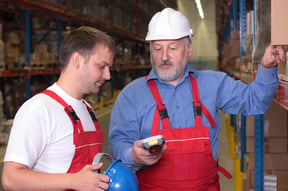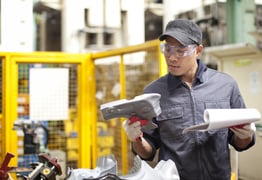May 29, 2015 |
3 Ways to Prevent Warehouse Accidents
Forklifts are the right-hand man of any warehouse. Known for their robust and thoughtful designs, forklifts have made material handling not only safer, but also more efficient than the traditional manpower and DIY method. While forklifts have definitely boosted workplace productivity and made material handling an easier chore, safe forklift operation remains the prerequisite of every successful material delivering and transportation.
Warehouse Accident Prevention
Forklift drivers are more subject to injury than you would ever imagine. With about 885,900 forklifts operating in the U.S., OSHA predicts that forklifts will contribute to approximately 85 fatal accidents, 34,900 serious injury accidents, and 61,800 non-serious accidents on an annual basis.
This also means that 11% of the forklifts will be involved in an accident before 2016 rolls around. Considering that most forklifts live for about 8 years, warehouse owners and operators alike are expecting a stunning 90% of forklifts to experience some kind of accidents during their service life. To help reduce the possibility of getting injured or being directly involved in a forklift accident, every warehouse should spend the time and money on safety trainings.
Train Your Employees
 When it comes to forklift accident prevention, proper training is the key. OSHA has reported that training employees to become proficient forklift operators will eliminate a number of accidents — such as the ones caused by load imbalance and weight overload.
When it comes to forklift accident prevention, proper training is the key. OSHA has reported that training employees to become proficient forklift operators will eliminate a number of accidents — such as the ones caused by load imbalance and weight overload.
In fact, regularly training operators (even seasoned ones) on various forklift safety subjects not only reinforces safety concepts that can be easily overlooked in everyday operation, but also reminds employees of the seriousness of workplace safety and encourages them to make smart forklift operation choices.
Practice Safe Operations
Driving with an elevated load and traveling at an excessive speed are two common causes behind forklift accidents, says Forklift Academy. Yet, with proper education and regular reminders, employees will begin to appreciate these seemingly-tedious safety practices and transform them into natural routines.
When it comes to traveling speed and load transportation, OSHA recommends operators to travel no faster than 5 miles per hour, while keeping their loads as close to the ground as possible (usually around 4 inches off the ground). Seatbelts are also a great lifesaver in keeping the operators from jumping or tumbling out of a tipping forklift and becoming the sorry victim of the falling loads.
Inspect Machines for Safety Issues
 Safe forklift practice begins before an operator steps into the forklift. According to OSHA, “A vehicle that is in need of repair, defective or in any way unsafe should be removed from service” Forklifts are required to be examined every day for mechanical defects before operation.
Safe forklift practice begins before an operator steps into the forklift. According to OSHA, “A vehicle that is in need of repair, defective or in any way unsafe should be removed from service” Forklifts are required to be examined every day for mechanical defects before operation.
Forklift operators should check for fluid levels, signs of cracks or leaks, tire pressure, and other parts for potential dysfunctionality and utility hazard. Additionally, having regular forklift maintenance is vital in securing your workhorse’s functionality during good handling and transportation.
Safety is always first in all workplaces. Employers and operators alike should adhere to a rigorous inspection and maintenance schedule while taking proper cares of their forklifts both in motion and at rest. Promote a healthy work environment with smart employee trainings
 Tom Reddon- Guest Blogger
Tom Reddon- Guest Blogger
Tom is a forklift specialist and blog manager for the National Forklift Exchange. He also sits on the Material Handling Equipment Distributors Association (MHEDA) Executive Dialogue team. Follow him on Twitter at @TomReddon
